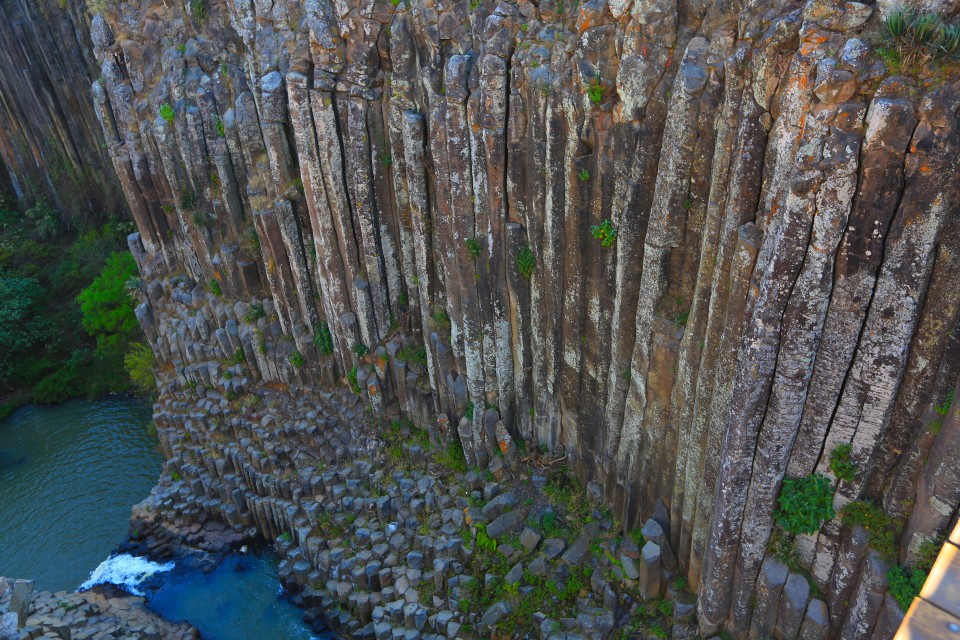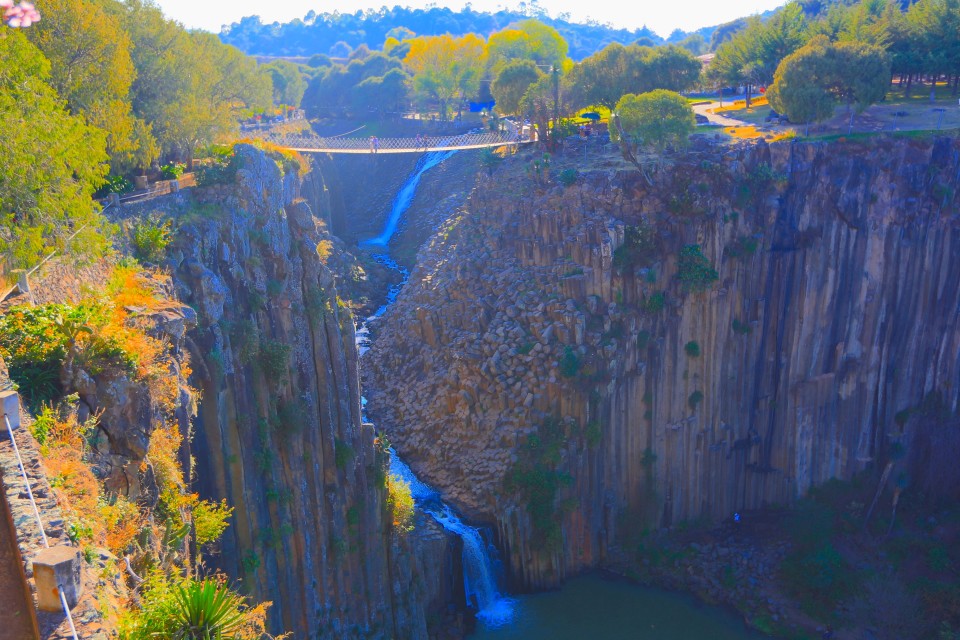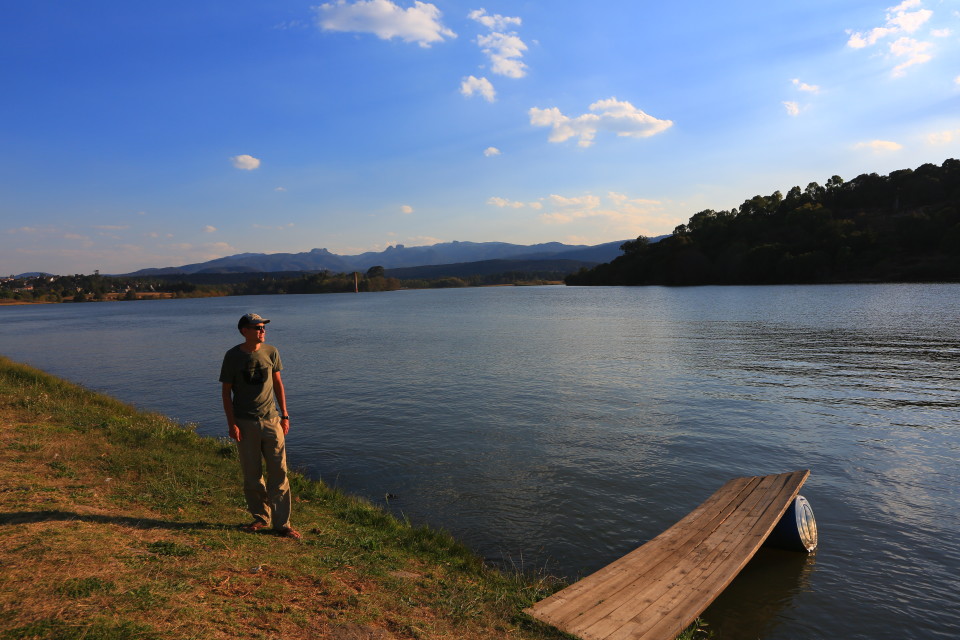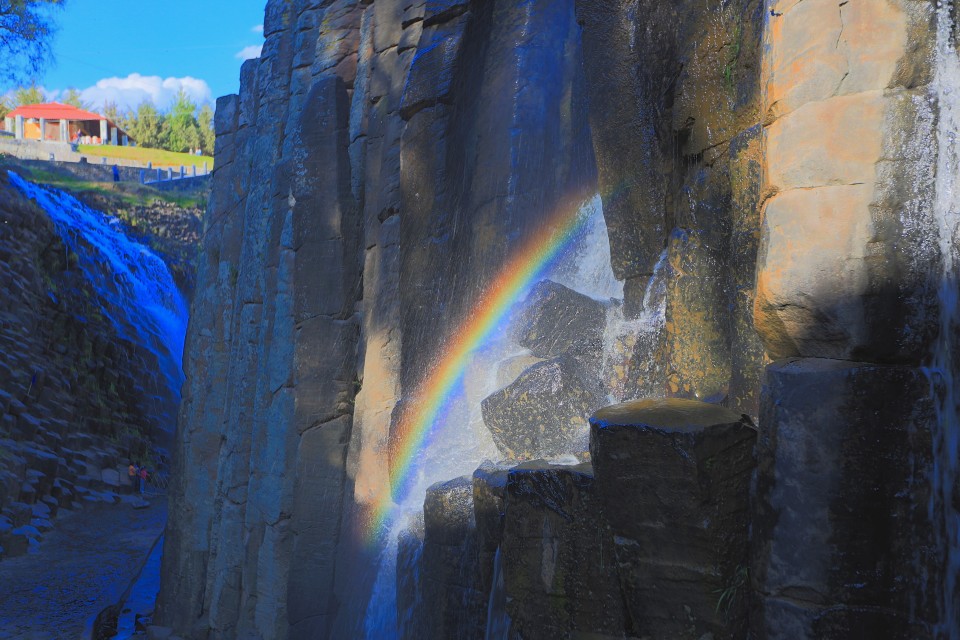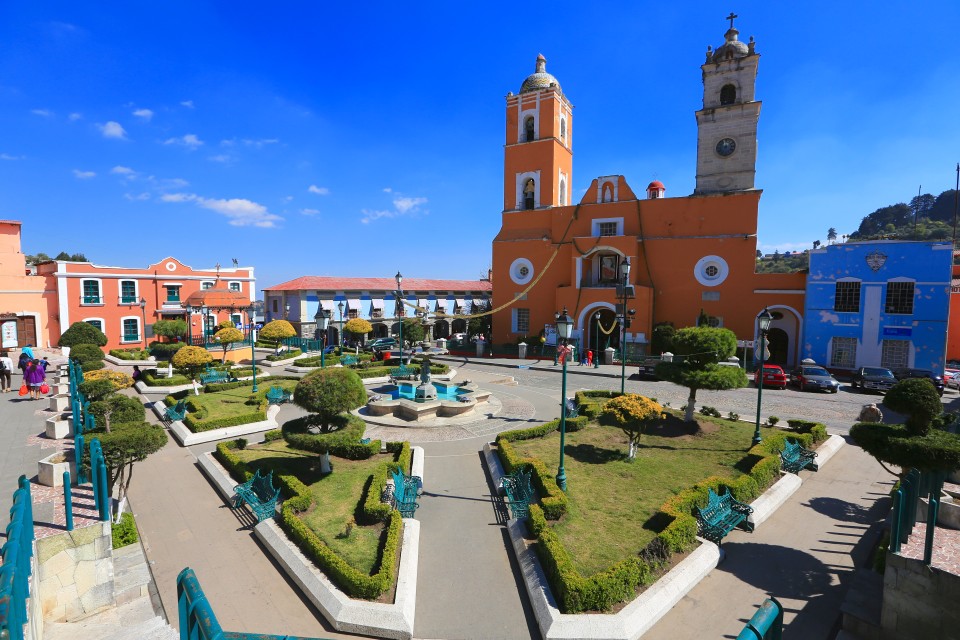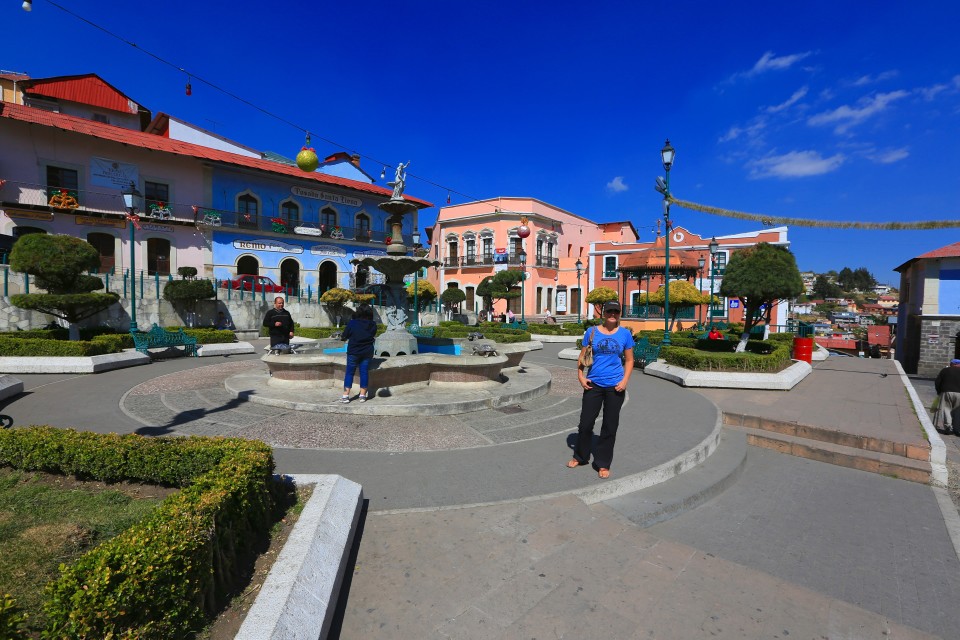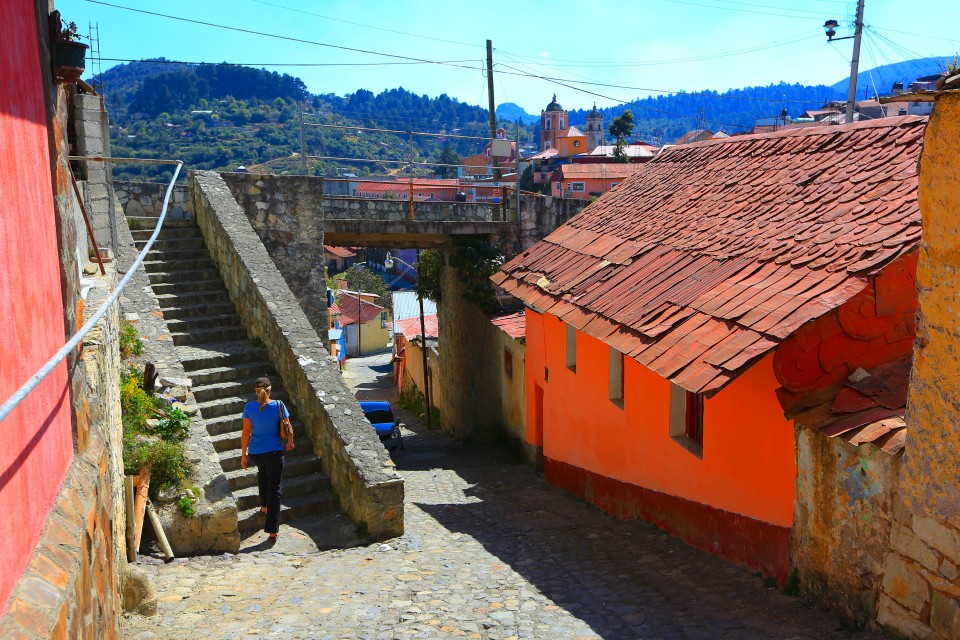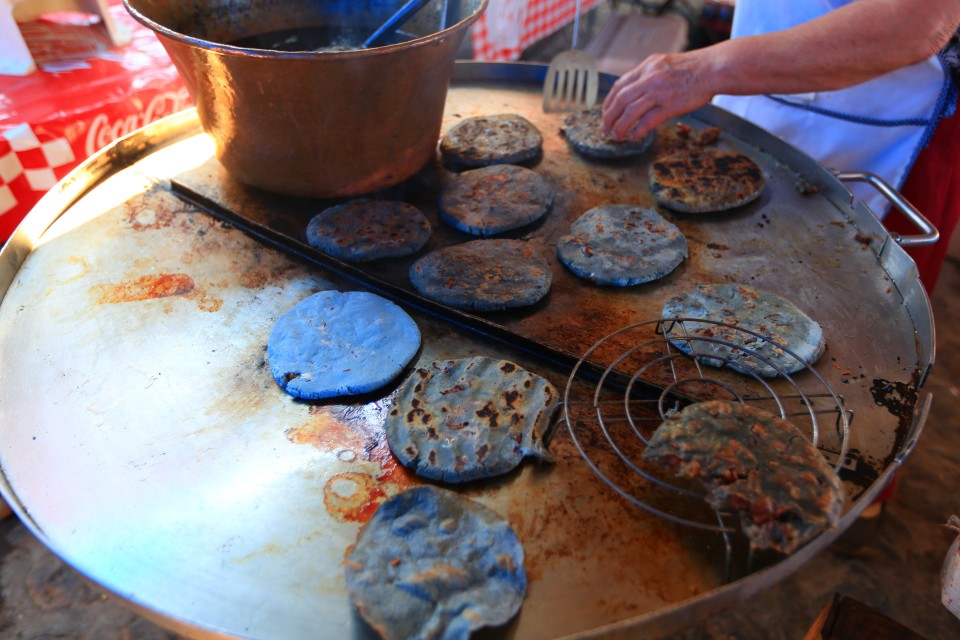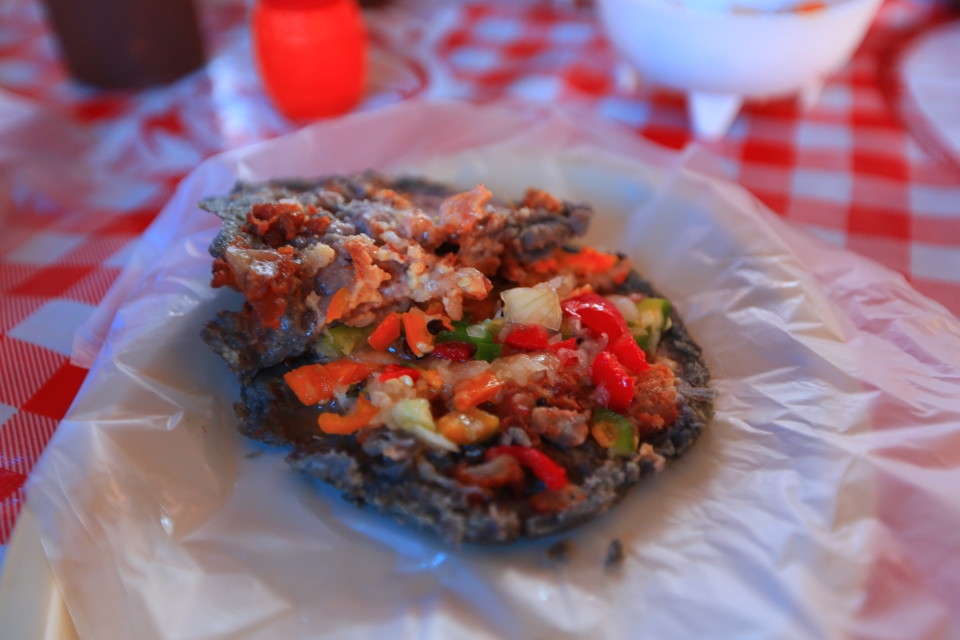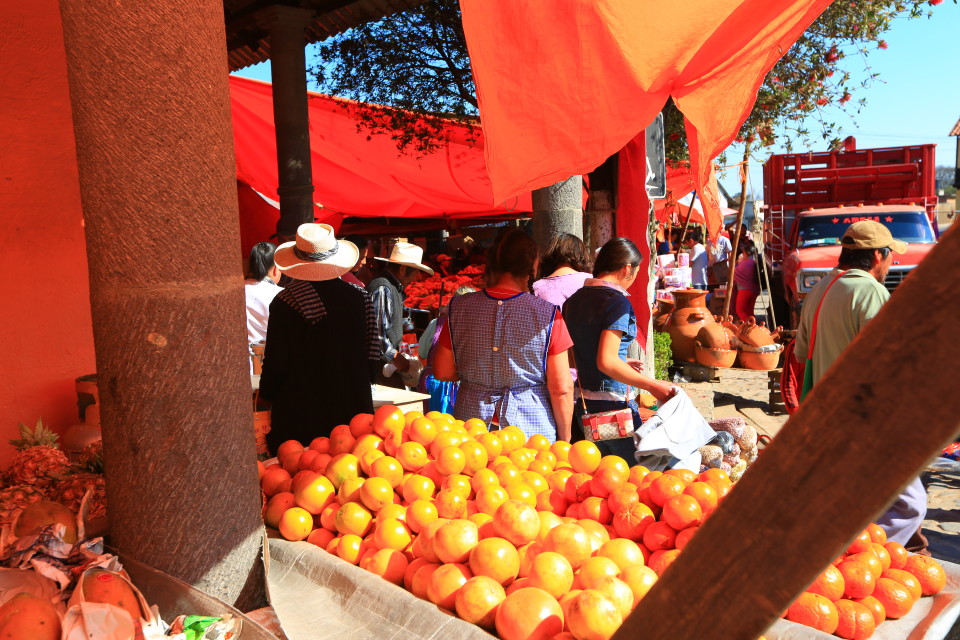Driving through Mexico we never know what we will get. It is one of the many things I love about this country. It is so amazingly diverse. We left the dry, cactus filled desert around the hot springs and within a few hours we were in the pine forested mountains above Mexico City. This part of Hidalgo is beautiful, and reminded us of the area around Lake Tahoe. There were a ton of places to camp and hike and if we had more time I would have loved to visit the Parque Nacional El Chico. But we only had a few days and wanted to see a strange geographical phenomenon that I thought Sam would enjoy since his dad and grandpa were both geologists and he nerds out over cool geological formations.
Prismas Basalticos
I am not sure how to describe this place, and I am not sure how much I even liked it (cool rock formations aside), but I am glad we saw it. Sometimes in Mexico “natural phenomenons” get over developed to the point of making them feel more like a theme park than a part of nature. This place was not even crowded with people, but it had about 35 shops selling Micheladas and trinkets from other regions of Mexico. It was not my favorite type of place, but we asked if we could camp in the park overnight and they let us for $8.00. So all night and the next morning we were totally alone with these strange rock formations which was fun, and so was watching Sam geek out over rocks =). I am glad we drove through this area and camped, it was our first time being in an alpine forest in Mexico and we loved the cold nights and warm, pine scented days.
Also, here is an email Sam’s dad Bill sent us after we sent him a picture of the rocks for those who like geology:
The story: at one time lava oozed out of the earth. This was not explosive like a volcano. Like all liquids it began to fill the basin with lava. These are called flood basalts. The lava cooled quickly and solidified and columnar joints were formed. Later the earth in that area was uplifted. This meant that the agents of destruction (weathering, mass wasting and erosion) could influence the area, uncoveringthe basalt and exposing the joints.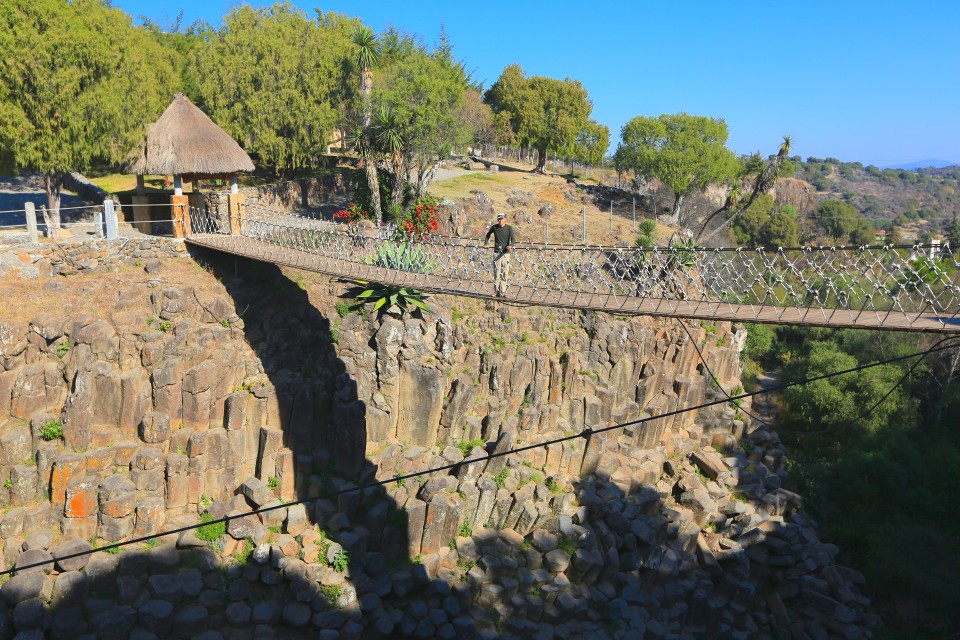
One of the good things about being in the park alone was you did not have a bunch of Mexican teenagers jumping on the rope bridge (they were testing the engineering strength while I was crossing the day before…)
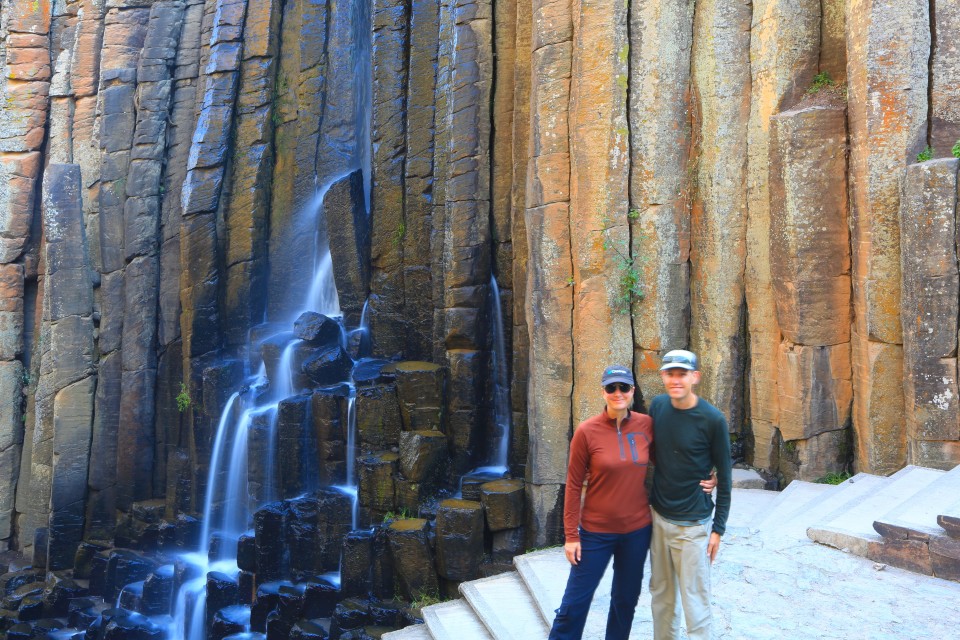
Sam’s wind sprints at 7000 feet to get in place for this photo made my morning. He only made it into the one picture and is still a blur after many, many attempts. The camera was far away. Such determination.
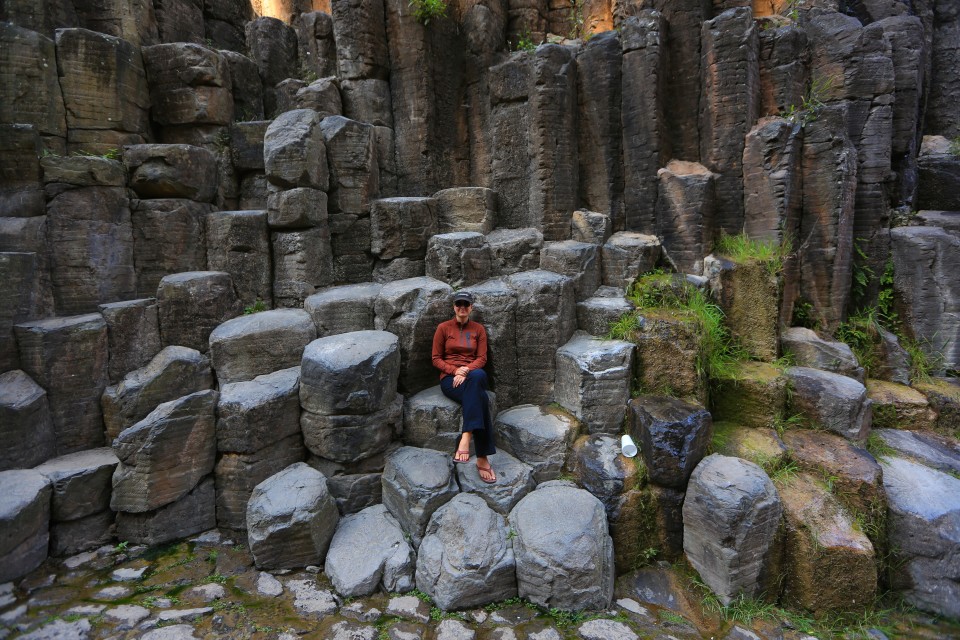
My basalt throne. I promise that michelada cup is not mine and yes I picked it up and threw it away.
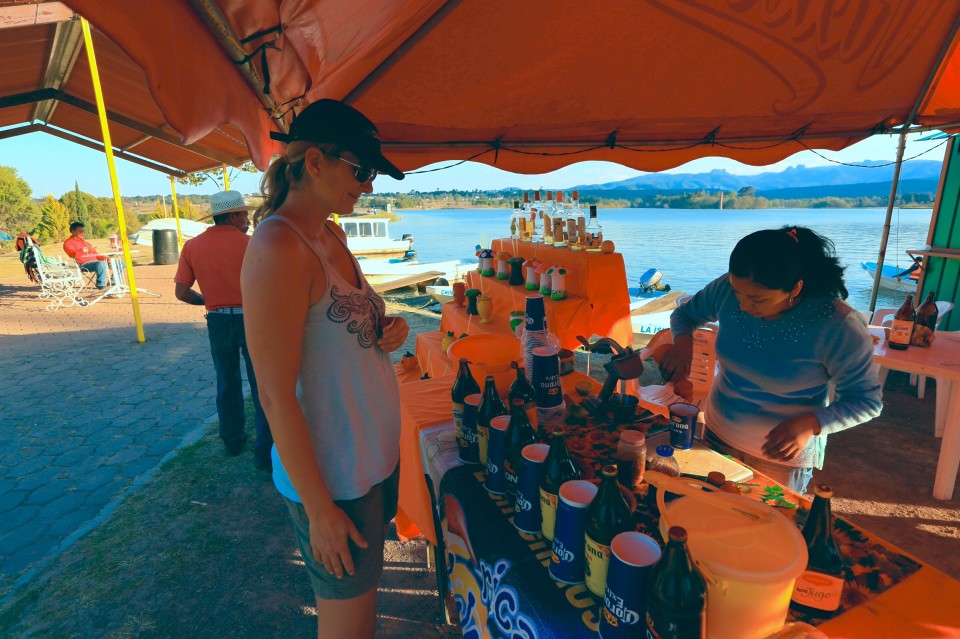
They took their micheladas very seriously here. There were about ten ingredients and it came in a big gulp sized glass. Yum!
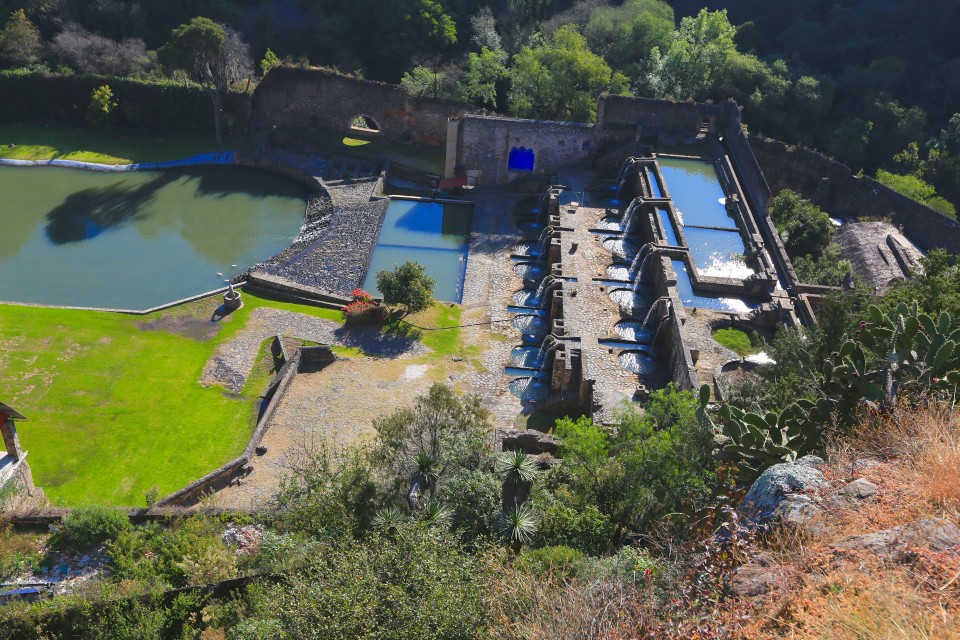
This was on the far side of the waterfall. We have no idea what it is. Maybe left over from the miners? There were no signs around it
Real del Monte
Driving through Pachuca, the capital of Hidalgo, we saw signs advertising pastes everywhere. The pictures on the signs looked just like the pasties I ate in England (which are very similar to an Argentinian empanada). I had never seen anything like this to eat here and I was slightly intrigued. There is not a lot of English colonial influence in Mexico.
However, apparently in the 1800s Cornish miners set up mining companies in this silver rich mountains around Mexico City. They left two big legacies behind: tasty meat pies (pastes) and soccer (futbol). This town is where futbol was played for the first time ever in Mexico. I thought this was pretty cool and enjoyed this little mining town with a Cornish twist for the historical legacy alone.
Huasca de Ocampo
Huasca is a tiny town in the mountains near Real del Monte. It is designated as a Pueblo Magico, and so far on our trip, all the towns with this distinction we have really enjoyed. The Mexican department of tourism created this designation to recognize smaller, beautiful towns in more rural parts of Mexico that are not often visited by tourists. We happened to be driving by it on market day and had to stop. The frenetic energy that you get from a small town on market day is something I never get tired of. This area of Mexico grows a lot of produce, and the variety of fruits and vegetables available rivaled Michoacan, I also tasted my first zapote negro here (black persimmon).
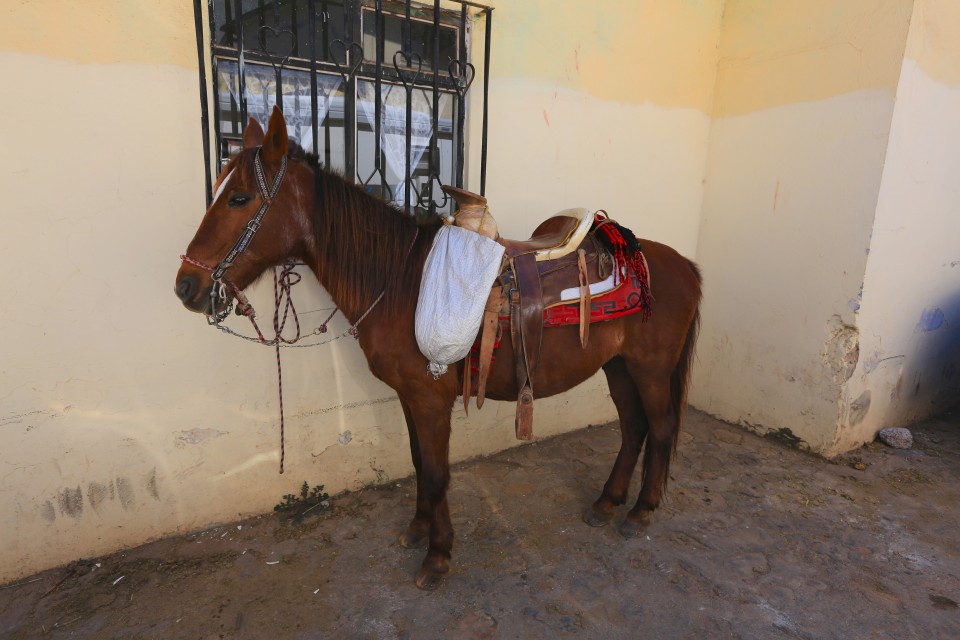
You can see the reflection of the XP in the window. Parked next to the next best mode of transportation.














